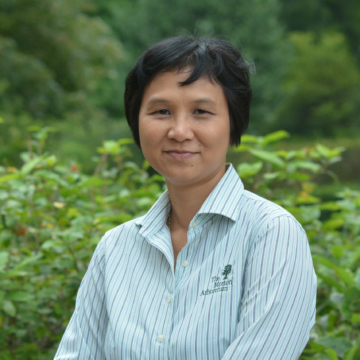The trees and forests of the Chicago region in Illinois are important natural resources that contribute substantially to the environment, human health, and quality of life of the region. The value of these contributions is expected to increase in the future, but mounting threats from insects, disease, invasive species, climate change, development, and changing infrastructure could severely limit these contributions. Addressing these future challenges is complicated by the diversity of the region’s trees and forests, their dynamic character, their fragmented ownership pattern, and the lack of comprehensive information about the resources.
To address these critical information needs, The Morton Arboretum undertook an assessment of the Chicago region’s urban forest in 2010 and 2020. These assessments seek to inform approaches for urban forest management that will inspire the citizens of the region to plant and protect trees and improve the vigor of the urban forest.
To better understand the urban forest resource and its value, i-Tree Eco models are used to quantify the forest structure, function, and values. Forest structure is a measure of various physical attributes of the vegetation, including tree species composition, number of trees, tree density, tree health, leaf area, biomass, and species diversity. Forest functions, which are determined by forest structure, include a wide range of environmental and ecosystem services such as air pollution removal and cooler air temperatures. Forest values are an estimate of the economic worth of the various forest functions. The trees and forests of the Chicago region in Illinois are important natural resources that contribute substantially to the environment, human health, and quality of life of the region.
Through gaining a deeper understanding of local forest resources, the project aims to:
- Support the improvement of forest policies, planning, and management.
- Provide data to support the potential inclusion of trees within environmental regulations.
- Determine how trees affect the environment and consequently enhance human health and environmental quality in urban and rural areas.
The 2020 Chicago Region Tree Census
The 2020 Chicago Region Tree Census was a scientific project to count and assess the state of trees across the seven-county Chicago region. The census was conducted by The Morton Arboretum with support from the Illinois Department of Natural Resources. Knowledge from this important study will guide tree planting and care in Chicago-area communities and inform scientific research about urban trees.
The study will help area residents, homeowners, local governments, planning agencies, scientists, universities, and community groups in this region understand:
- How many trees the region has.
- What kinds of trees they are.
- How old the trees are.
- What trees do for area residents.
- The health of the region’s trees.
- How the region’s urban and community forest is changing.
Combined with the data from a similar study conducted in 2010, the 2020 Chicago Region Tree Census provides a clear picture of change in the region’s trees and a baseline for future research and forest growth efforts. For example, the comparative data shows researchers how many ash trees have been lost to the emerald ash borer infestation of recent years. Census results also show how trees may be vulnerable to other pests. The data will provide important guidance for tree planting and management to make communities greener, healthier, and more beautiful.
The study was conducted between June and October 2020. Crews did not count every tree in the region individually. Instead, they visited 1,576 randomly distributed sample plots that were also surveyed in 2010, so the data from the two studies will be comparable. An analysis of the sample plot data was used to assess the current state of trees in the entire region, using scientific models developed by urban foresters at the U.S. Forest Service of the United States Department of Agriculture.
The study was conducted by the Davey Resource Group, Inc., a wholly-owned subsidiary of the nationwide Davey Tree Expert Company. Trained interns from the Student Conservation Association accompanied Davey Resource Group staff on the census crews.


